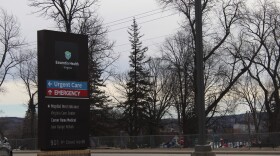THIEF RIVER FALLS — The U.S. Fish and Wildlife Service along with its partners are planning several prescribed burns at Agassiz National Wildlife Refuge in the spring of 2023.
One planned burn is large and landscape-scale, involving U.S. Fish and Wildlife Service lands and Minnesota Department of Natural Resource lands.
The historic year of wildfires across northwest Minnesota in the spring and summer of 2021 served to increase the emphasis of the U.S. Fish and Wildlife Service conducting prescribed fires regularly to manage vegetative fire fuels like grass, brush and trees across the landscape, the agency reported in a news release.
The carefully planned prescribed burns conducted on federal and state lands are needed to maintain critical habitats for both game and non-game wildlife species calling northwest Minnesota home, the agency stated.
At the 61,500-acre Agassiz National Wildlife Refuge located in Marshall County, some of the target species are migrating waterfowl and songbirds, grassland birds, moose, wolves and whitetail deer.
“All these animals coexist on the varying habitats found across the refuge and all of these habitat types are fire dependent; meaning that it requires some sort of fire disturbance over time to stay viable,” the agency stated.
Another benefit of conducting prescribed fires is to set back woody vegetation, like willow and aspen, that has encroached upon open grassland areas. Fire also removes dry, dead plant matter that has built up over years, opening up space for new plant growth and providing better cover for wildlife. The burning recycles important nutrients that are locked up in dead plant matter, which returns them to the soil where growing plants can use them.
For more information about prescribed fire activities on Agassiz National Wildlife Refuge, contact Fire Management Specialist Eric Mark at 701-425-9080 or eric_mark@fws.gov.











